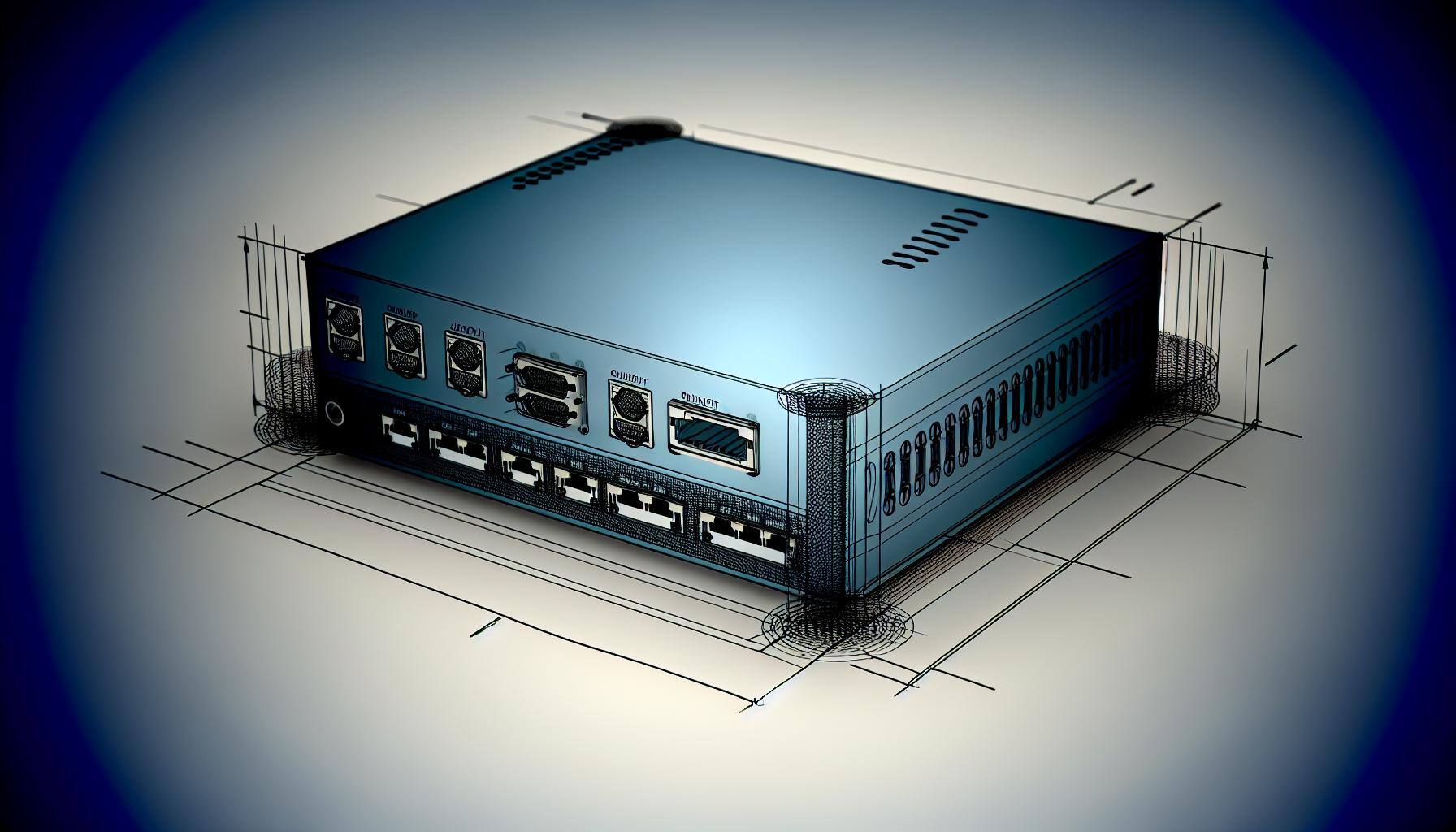Distributed Denial of Service (DDoS) Attacks Defined
In today’s age businesses heavily rely on their online operations. It is crucial for them to remain vigilant and proactive against the dangers posed by Denial of Service (DoS) and Distributed Denial of Service (DDoS) attacks. These malicious attacks can severely disrupt network functionality and block user access causing operational disruptions. This article aims to provide you with an overview of DoS and DDoS attacks, including the various forms they can take their mechanisms and essential practices for detecting, countering, and preventing such threats. Given the evolving landscape of cyber threats, staying well informed is paramount in safeguarding your online infrastructure.
Denial of Service Attacks Defined
A Denial of Service (DoS) attack aims to disrupt the normal functioning of a network or machine, rendering it inaccessible to its legitimate users, including employees, members, or account holders. These attacks are carried out by either overwhelming the target with an excessive amount of traffic or sending specific information that triggers system crashes. Common targets include web servers belonging to prominent organizations like banks, businesses, media outlets, government agencies and trade associations. While DoS attacks typically do not result in direct data theft or significant financial losses, they can cause substantial disruptions and require affected parties to invest both time and money in recovering from the impact.
DoS Attack vs. DDoS Attack
What is the difference between DoS and DDoS attacks? In essence, a DoS attack originates from a single source and aims to overwhelm a network or server. To execute such an attack, the perpetrator exploits significant bandwidth by inundating the target with an extensive amount of data. Generally, DoS attacks occur on a smaller scale, thus rendering individuals and smaller businesses more vulnerable to them. Imagine a hacker targeting an online gamer, causing them to lose connection due to server overload, or attacking a small website as a distraction from a more severe attack. The distinguishing characteristic of a DoS attack is that it originates from a single source, making it somewhat easier to track down the person responsible.
In contrast, a DDoS attack is a more intricate form of a DoS attack. The primary differences are the scale and the source. In a DDoS attack, the offender controls a widespread network of compromised devices, which could be scattered around the globe. This network, usually consisting of hijacked computers or bots, grants the attacker a significantly larger bandwidth, allowing them to aim at bigger and more fortified systems or organizations. The broad spread of the attack over numerous devices complicates the task of pinpointing and tracking the source, unlike the more localized nature of DoS attacks.
How Does a DDoS Attack Work?
DDoS attacks utilize vast networks of internet-connected devices to disrupt access to servers or network resources, such as websites or online applications. The initiation of a DDoS attack involves the utilization of malware or exploitation of security loopholes to hijack and control numerous machines and devices. These commandeered devices, referred to as “bots” or “zombies”, then have the ability to spread the malware further and contribute to the scale of the DDoS attacks. These bots collectively form large networks known as “botnets”, which use their combined power to intensify the impact of the attack. The covert nature of these infections on IoT devices often leaves the actual device owners unaware of their role in the attack, making them unintended accomplices. Meanwhile, the attackers manage to stay concealed and difficult for the targeted organizations to identify.
When a botnet is ready, the attacker remotely commands each bot to focus their efforts on a designated target system. During an attack, these bots inundate the target’s IP address with requests. Similar to the unique fingerprint of a human, each device has a distinct address that identifies it on the internet or a local network. This flood of traffic from the botnet obstructs normal user access, resulting in a denial of service and blocking legitimate traffic from reaching the intended online resource. Furthermore, these botnets, with their myriad of hijacked devices, are sometimes made available for hire, offering “attack-for-hire” services. This enables individuals with harmful intentions, but lacking technical skills, to easily orchestrate DDoS attacks.
Types of DDoS Attacks
In general, attacks of DoS and DDoS nature are categorized into three main types. Each type represents a different method of execution and impact. These categories encompass the diverse strategies and targets employed in such cyberattacks.
Volume Based Attacks
Volumetric DDoS attacks, also known as floods or flood attacks, are the most recognized form and involve overwhelming a server with excessive traffic, measured in bits per second (bps) or Gigabits per second (Gbps). These attacks, which gained notoriety in the late 1990s, are typically executed using amplification techniques like DNS amplification. Attackers send small DNS requests with a spoofed victim's IP to a DNS server, which responds with a much larger message to the victim. Additionally, botnets comprising compromised IoT devices, which are often poorly secured, are commonly used for these attacks. The Mirai botnet, which exploited unsecured IoT devices, is a notable example of a destructive volumetric DDoS attack.
Protocol Attacks
Network Protocol DDoS attacks, measured in packets per second (pps), exploit internet protocols to disrupt online services. These attacks, such as UDP floods, SYN floods, and various amplification methods, target layers 3 and 4 of the OSI model, affecting network devices like routers. For instance, the ping of death attack overflows memory buffers by manipulating packet fragments, while a TCP SYN flood overwhelms a target with excessive SYN requests. The category of Network Protocol DDoS attacks includes common attack techniques such as fraggle attacks, smurf attacks, and teardrop attacks.
Fraggle attacks are characterized by exploiting vulnerabilities in the network layer protocols to disrupt service. In Fraggle attacks, the protocol exploited is typically the UDP protocol, where the attacker sends a large amount of UDP echo traffic to network broadcast addresses, all of it having a spoofed source address of the intended victim. The result is an amplification attack that overwhelms the victim's network with traffic.
Smurf attacks exploit vulnerabilities in the network layer, particularly leveraging the Internet Control Message Protocol (ICMP). In this type of attack, the perpetrator sends ICMP echo request packets (ping requests) to a network's broadcast address, all with the victim's spoofed IP address as the source. Each device on the broadcast network responds to the ping request, resulting in a flood of traffic directed back to the victim's IP address, overwhelming their network. This amplification method makes Smurf attacks particularly disruptive.
Teardrop attacks specifically exploit vulnerabilities in the fragmentation reassembly process of the Transmission Control Protocol/Internet Protocol (TCP/IP). In a Teardrop attack, the attacker sends fragmented IP packets with overlapping, oversized payloads to the target machine. The confusion arises when the target system tries to reassemble these malicious packet fragments, which due to their malformed nature, causes the system to become confused and potentially crash. This type of attack targets the way that different operating systems handle packet fragmentation, making it a specialized form of attack on the network layer.
Application Layer Attacks
Application Layer DDoS attacks (sometimes referred to as layer 7 DDoS attacks), measured in requests per second (RPS), focus on overwhelming the application layer (layer 7) of a server. These attacks mimic legitimate user requests, making them harder to detect, and often do not require a large botnet. They aim to overload the server's CPU and memory by triggering numerous internal requests and loading files. A single HTTP request can significantly slow down the system. Application layer attacks can also combine elements of volumetric and protocol attacks, known as multi-vector attacks, to enhance their effectiveness and are increasingly favored by cybercriminal groups.
How to Identify a DDoS Attack
The nature of DDoS attacks often leaves security professions researching, “How to tell if someone is DDoSing you.” The challenge with these attacks is their sudden and unannounced nature. While some prominent hacking groups might issue threats beforehand, typically, an attacker stealthily launches the assault on your website without any prior warning.
Frequently, the initial indication of a problem does not come from your own monitoring but rather from the feedback of your customers, who might report issues with accessing your website. At first, it is common to confuse a DDoS attack with a problem related to your server or hosting service. Upon inspection, you might notice unusually high network traffic and fully utilized resources, yet no obvious issues or background programs seem to be the cause. The lag between realizing you are under a DDoS attack and starting to counteract it can span several hours. This delay can lead to significant service disruption and loss of revenue, striking a blow to your business.
Recognizing a DDoS attack promptly is crucial for effective mitigation. Key indicators of such an attack include an unusually high number of requests from a single IP address over a brief period, your server showing a 503 service outage error, and the expiration of the Time-to-Live (TTL) on ping requests. Additionally, performance issues in internal software, especially if it shares the same network connection, and a significant surge in network traffic as shown by log analysis, can also signal an ongoing DDoS attack. These indicators can be used to set up an automated alert system to promptly notify IT administrators, allowing for a quicker response to the attack.
How to Trace a DDoS Attack
After confirming you are facing a DDoS attack, you might then be wondering how to find out who DDoSed you. Investigating the source of a DDoS attack can be very challenging, which is why attackers find these attack methods appealing because they believe there is a low chance of getting caught. One of the primary difficulties in pinpointing the attack source is the distributed nature of these attacks. The traffic bombarding servers comes from thousands of bots scattered globally, with the attackers having no direct link to these compromised machines. These hackers have become experts at hiding their whereabouts through the use of advanced techniques such as onion routing, peer to peer networks and various methods of obfuscation.
However, it is still possible to track down the individuals responsible for launching a DDoS attack. By monitoring the IP addresses of incoming data packets, it becomes possible to gather details about the bots involved including their IP addresses, operating systems, geographic origins, and network providers. Sometimes there may even be an opportunity to interact with these bots in order to disable them, though achieving success in this endeavor is not guaranteed.
The effectiveness of this method has its limits, especially when it comes to handling extensive botnets. Moreover, decrypting the communication used by hackers to control these bots is often beyond the capabilities of most businesses. Digital forensics presents another avenue for investigation, focusing on identifying the controllers by examining their operational slip-ups. Key aspects to consider include the attacker's motives (such as financial gains or mere disruption), their resource sources (like DDoS Booters or Botnet-as-a-Service), any potential payment trails, and the types of tools used in the attack. This gathered intelligence can be invaluable to law enforcement agencies, although it is important to note that despite these efforts, DDoS attacks remain notoriously challenging to track and prosecute.
Preparing for DDoS Attacks
To effectively mitigate DDoS attacks, start by minimizing your infrastructure's attackable areas. This strategy involves shielding your applications and resources from unnecessary exposure to certain ports, protocols, or applications. Implementing tools like Content Distribution Networks (CDNs) or Load Balancers can help conceal your computational resources and restrict direct internet traffic to crucial infrastructure elements like database servers. Also, using firewalls or Access Control Lists (ACLs) can effectively manage the traffic reaching your applications.
When preparing for large-scale DDoS attacks, focus on enhancing both bandwidth capacity and server capability. Ensure that your hosting provider has ample, redundant Internet connectivity to handle increased traffic volumes. Positioning your resources strategically near major Internet exchanges can maintain access during high traffic situations. Employing CDNs can also be beneficial. For server capacity, the ability to swiftly scale up your computational resources is key, either through larger servers or those with advanced features like enhanced networking. Load balancers are also useful for evenly distributing traffic and preventing overloading.
Differentiating between normal and abnormal traffic is critical. Basic approaches like rate limiting, where traffic intake is capped at a level your system can handle, can be effective. More advanced methods involve scrutinizing individual packets and assessing them against known patterns of legitimate traffic.
Finally, implementing a Web Application Firewall (WAF) is crucial for defending against sophisticated attacks that exploit application vulnerabilities. Customized mitigation strategies can help filter out suspicious requests, considering factors such as their origin or behavior patterns. In certain scenarios, expert assistance in analyzing traffic patterns and developing specific defenses can be invaluable for real-time attack response.
DDoS Incident Response
Confronting a DoS or DDoS attack requires a solid plan for managing and recovering from the disruption. To assist your business in dealing with such scenarios, here is a guide designed to navigate you through these challenging situations:
- Assembling a DDoS Incident Response Team: Before an attack occurs, form a dedicated team responsible for responding to DDoS incidents. This team should have clear roles and responsibilities and be equipped with the necessary tools and authority to act swiftly in the event of an attack.
- Identifying the Attack: Confirm if the service disruption is due to a DDoS attack by examining system logs and network traffic. Ensure it is not caused by internal server issues or problems with your Internet/Cloud Service Provider. Check for expected traffic increases due to events like product launches.
- Containing the Attack: If the attack targets a specific service or port, consider disabling or closing it. Block IP addresses involved in the attack and use rate-limiting to control packet numbers from single IPs. Consult with your Internet or Cloud Service Providers for DDoS defenses like traffic scrubbing or sinkholing and redirect traffic to backup servers if available.
- Acquiring Forensic Evidence for Analysis: Gather network traffic logs, system logs, network flow data, and packet captures to understand the attack's nature, source, impact, and targeted systems. Analyze this data to pinpoint the root cause and any vulnerabilities that were exploited.
- Hardening Your Systems: Implement measures to protect against future attacks. Use Web Application Firewalls (WAFs), rate limiting, and load balancers to manage traffic. Keep network devices updated, review and adjust firewall configurations, segment your network, and consider DDoS protection services.
- Notifying Stakeholders and Reporting the Incident: Inform all relevant parties about potential downtimes or compromised devices. Report the incident to cybersecurity authorities and, if necessary, file a police report for monetary losses or criminal activities.
Having these steps in place will help your organization effectively respond to and recover from a DDoS attack, reducing damage and ensuring a quicker return to normal operations.
Leveraging Cybersecurity Experts to Mitigate DDoS Attack Risks
In conclusion, navigating the complexities of DoS and DDoS attacks requires not only an understanding of these threats but also the implementation of robust defense strategies. Compass IT Compliance stands as a vital ally in this endeavor, offering expert guidance and solutions tailored to mitigate various cybersecurity risks. We offer tailored services and possess extensive knowledge of cybersecurity threats. We provide organizations with the essential resources and expertise to effectively mitigate the risks associated with DoS and DDoS attacks. By partnering with us, you can strengthen your defenses against these constantly evolving risks. Contact us today to learn more and discuss your unique challenges!
Contact Us
Share this
You May Also Like
These Related Stories

Domain Name Server (DNS) Hijacking Defined

What Is a Firewall? Definition & Best Practices

.webp?width=2169&height=526&name=Compass%20white%20blue%20transparent%202%20website%20(1).webp)
-1.webp?width=2169&height=620&name=Compass%20regular%20transparent%20website%20smaller%20(1)-1.webp)
.webp?width=610&height=362&name=March%202024%20CTA%20(2).webp)
No Comments Yet
Let us know what you think